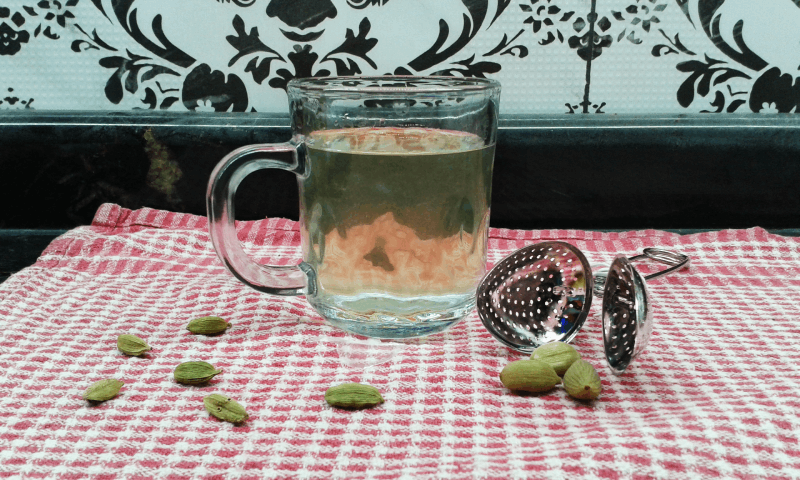We have been coming across this spice often, both in our infusions as well as in our recipes, so we decided it’s time to spread the bat wings and take a closer look at this seed! Considering how often it is used we’re hoping we will discover a couple of good, spicy secrets in this tiny seed pod! Flavor-wise it is a rather unique taste with loads of subtle notes, including cinnamon, ginger, clove, cumin, mint, and coriander, so this infusion, even though it has just one spice is bound to be a burst of flavors! Let’s get to it and hope it will be just as exciting as we’re anticipating!
What is Cardamom?
As you might have guessed from our intro, Cardamom is a seed pod that serves as an aromatic spice. It is also known as cardamon, cardamum, or elaichi, even though there are different variations, these two names refer to the same thing. Unlike the other herbs and spices we have sniffed around so far, cardamom is made from the seeds of several plants in the Elettaria and Amomum genera, both in the Zingiberaceae family. This particular family is made up of about 50 genera of flowering perennial herbs, including turmeric and ginger plants. The little seed pods are the main trade of these genera, being triangular in cross-section and spindle-shaped, with a thin, papery shell and small, black seeds. Elettaria pods are light green and smaller than the dark brown Amomum ones.
They are native to the Indian Subcontinent and Indonesia, so no wonder they are so common in Indian flavors, however, species used for cardamom are native throughout tropical and subtropical Asia as well. Nowadays it is also cultivated in Guatemala and Tanzania, besides Malaysia, with Guatemala becoming the biggest producer, topping even India.
When taking a look at the oils in this seed we find a good amount of terpineol and myrcene as well as cineol. In smaller amounts one can also find limonene, menthone, phellandrene, sabinene, heptane, and also borneol, so no wonder the flavor is so colorful. Cardamom is exceptionally rich in Dietary Fiber, also high in Iron and Magnesium, and also provides a good amount of Calcium, Potassium, and Vitamin C. Now let’s see what health benefits this little pod provides.
Health Benefits
Now, having so many different oils, you may guess that Cardamom has a wide range of benefits! Like most herbs and spices we have looked at it has anti-inflammatory and antimicrobial properties. The fact that it has menthol may suggest to you that it is good for your oral health, and in that case you are right, it is. It also has detoxing properties which means it’s good for more than simply weight loss. It’s another flavoring that is also used as a medicinal, so let’s take a look at some of the health benefits we can get by adding this spice to our diet.
- Helps detox, and thus helps the liver. Also helps against conditions like fatty liver
- Great for oral hygiene and health
- Chewing Cardamom pods not only freshens the breath but might also help in nicotine withdrawal
- Improves Digestion and fights against related disease like stomach ulcers
- Helps with Nausea and Vomiting
- Helps fight respiratory problems
- Helps against cold and coughs
- Helps against Metabolic disorders like Diabetes
- Improves hearth health
- Promotes relaxation and reduces anxiety
Side Effects
As always we suggest talking to your doctor before making any massive changes to your diets, especially if you are on some other medication. Remember that if this seed is good against your condition, then you might need to lower your doses, so, better be safe and take medical advice. However, a sprinkle of cardamom to your food or an infusion every now and again should only be harmful if you have an allergic reaction to this particular seed (which shouldn’t be a common allergen, but if it’s the first time, just be cautious just in case). Now let’s see what symptoms you should keep an eye out for (although there doesn’t seem to be enough research on its side effects so be aware of any changes you note):
- Skin Rash
- Shortness of Breath
Making the Tea
- 3 to 4 Cardamom Pods
- 1 cups of water
As always a simple infusion is simple to make. Bring the water to a boil, let it settle for a couple of seconds, pop the pods in and let steep for a couple of minutes. Remove the pods and enjoy your tea. As always you can add sweetner or milk, and adjust the amount of pods and steaping time for a stronger or lighter version according to your taste. You can also crack your pods a little or chop them to release more flavor, or you can let them simmer on low heat, depending on how strong you want your tisane. This infusion is really light in color so don’t be surprised if your water remains almost colorless, the smell will let you know it’s done! It is often paired with ginger or clove, it also goes very well with black tea, it’s a versatile spice so it will go well with several other spices and herbs. If you would like a more complex beverage you might want to try our delicate Infusion , or the famous Masala Chai, or if you’re looking for a cold beverage you can go for a Cha Yen, all of which include Cardamom. Let us know your thoughts about this spice infusion!

